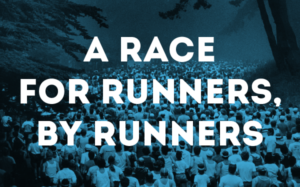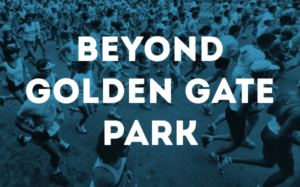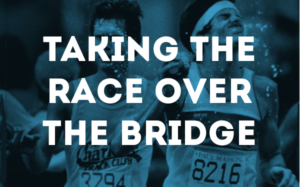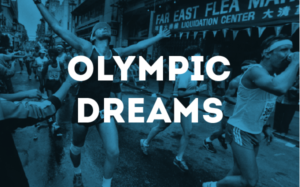Taking the Race Over the Bridge
Contributed by Erin Mara, a writer and runner living in San Francisco.
Above: August 19, 1984 – San Francisco, California, United States: Runners in Golden Gate Park, with the Conservatory of Flowers in the background, during The San Francisco Marathon. (Steve Ringman / San Francisco Chronicle / Polaris)
By the mid 1980s, The San Francisco Marathon had grown exponentially from its start nearly a decade earlier. The local running community embraced the event, and it was gaining a tourist following as well, especially as a new route took the race through the entire city.
John Mansoor, Regional Director for USA Track and Field and former race director, knew The San Francisco Marathon well — he ran it from 1980-1984, finishing third in 1980 and in the Top 10 each time. He had a good feel for the race as an athlete, then as a race director from 1990-1995 — and he thought something was missing. That’s why, in the mid-1980s, Mansoor helped race owners bring The San Francisco Marathon over the Golden Gate Bridge.
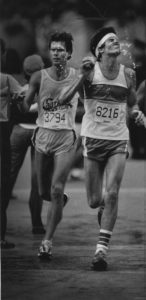
August 19, 1984 – San Francisco, California, United States: Runners at the 12-mile mark of The San Francisco Marathon. (Steve Ringman / San Francisco Chronicle)
“It’s the most iconic symbol of San Francisco — I knew we had to do it,” Mansoor said.
In an effort to create a city-wide event to incorporate all iconic points of the city, Mansoor worked to help take the race across the Golden Gate Bridge. “All great cities have a race that incorporates the iconic symbols of that city, and San Francisco deserved the same thing,” he said. “San Francisco needed to find a way to make that happen, too.”
So working with city leaders and multiple organizations throughout San Francisco, in 1989, The San Francisco Marathon was able to switch its route and take runners across the famed orange vermilion expanse of the Golden Gate Bridge.
Other races at the time incorporated the Golden Gate Bridge: The Mayor’s Cup and Golden Gate Marathon ran on the bridge’s sidewalk, Avon’s Women’s Marathon ran a lane on roadbed — but The San Francisco Marathon was the first race to shut down multiple lanes of the bridge and have big numbers run on the roadbed.
“We were able to shut down whole bridge for thousands and thousands of people,” Mansoor said. “It was much like the New York City Marathon that shuts down the Verrazano Bridge, and that’s exactly what we were after.”
“This was a big deal — especially to visiting runners,” Mansoor said, noting that race organizers were able to drive tourism to San Francisco with the compelling bridge segment of the event. The race worked with tourism agents from Japan and Europe in an effort to bring in runners from outside of U.S. Runner quantities grew as the new course offered a truly singular experience.
The new course started on the north side of the Golden Gate Bridge. Runners were bused to the start line since the bridge was closed to traffic. In a history-making moment, runners started the race on the bridge, pounding the pavement on some of the most scenic 1.7 miles of roadbed in the world. Looking left, runners marveled at the sparkling city skyline and Alcatraz Island, like a pearl in the center of the San Francisco Bay. To the right were the towering, jagged cliffs of the Marin headlands, and the open ocean of the blue Pacific.
“We always hoped for no fog and to see the city skyline, and on most race days it was just absolutely gorgeous,” Mansoor said.
From the bridge, the course took racers south, through the Presidio, the Marina, Chinatown, along the Embarcadero, up to the Mission, through the Castro, Haight, and up and over through Golden Gate Park. “The goal was to incorporate every popular area in the city, and we did that,” Mansoor said.
The early course, which incorporated the bridge finished at Golden Gate Park’s Polo Fields. A few years later it switched to Kezar Stadium for “an Olympic style finish” where runners finished on a track in a beautiful stadium with 6-7,000 spectators in the stands. “It was a pretty impressive ending,” Mansoor said.
Decades later, the Golden Gate Bridge is still one of the most special and important components of The San Francisco Marathon.
Bay Area local, and The San Francisco Marathon veteran (and winner!), and elite runner Devon Yanko cites the Golden Gate Bridge as her favorite part of the race because “you get to run on the bridge versus the sidewalk — you never get to do that otherwise.”
“The most iconic thing about this race is the unencumbered access to running on the bridge,” Yanko said. “It’s a special experience. It’s a special bridge. It’s one of the most special parts of the race.”
Origins of the Race



